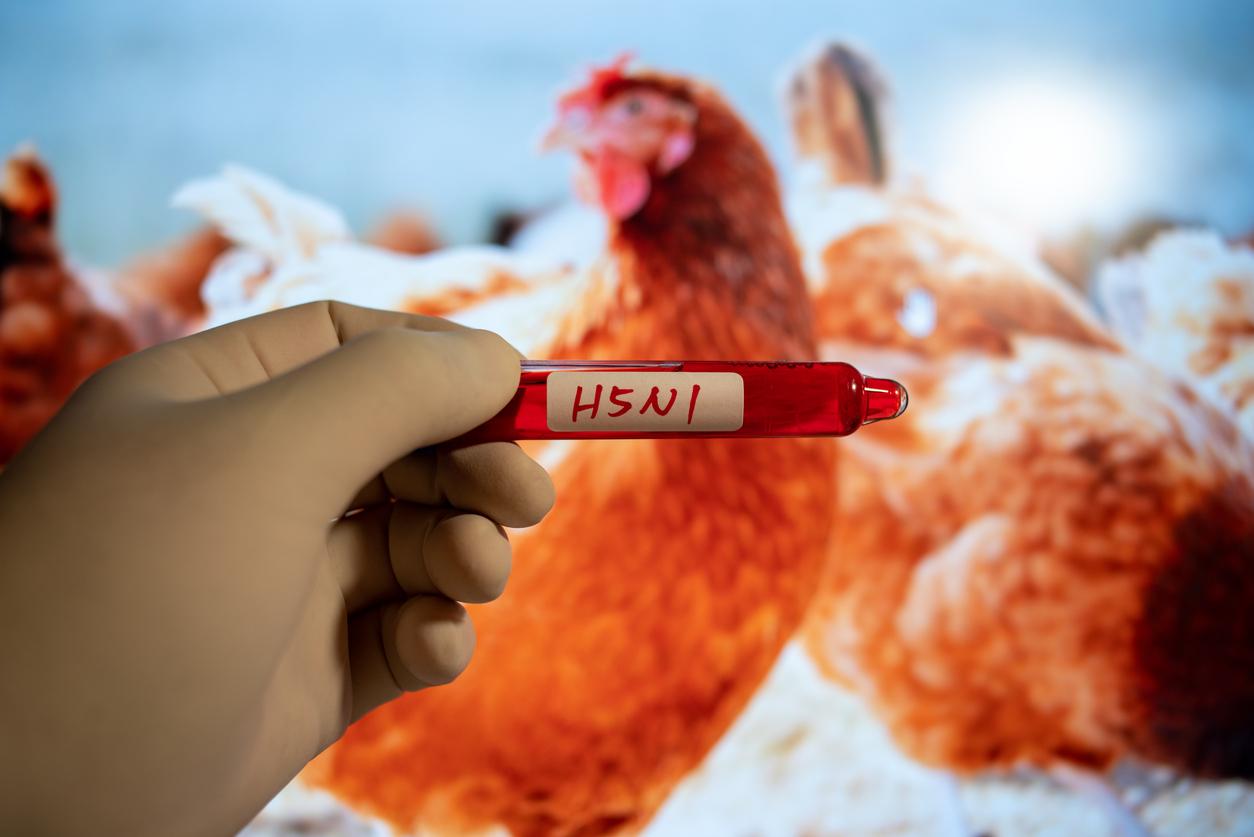Authorities fear that the avian flu virus will mutate and adapt to become transmissible from human to human.

- The WHO expressed its “huge concern” this Thursday, April 18, about the increasing spread of the H5N1 strain of avian flu to new species, including humans. And for good reason, a person tested positive in early April in the United States after being contaminated by an infected cow. This is the second human case in the country.
- The major fear is that the H5N1 strain of highly pathogenic avian influenza (HPAI), which has “an extraordinarily high mortality rate” in people infected by animals, will adapt to become capable of transmitting from human to human. human.
- However, there is currently no evidence of such contamination between humans. Furthermore, cases of transmission of avian flu to humans remain very rare: between the beginning of 2023 and April 1, 2024, the WHO recorded 889 human cases in 23 countries, including 463 deaths.
The World Health Organization (WHO) has expressed her “huge concern”, this Thursday, April 18, in the face of the increasing spread of the H5N1 strain of avian flu to new species, including humans. And for good reason, a person tested positive at the beginning of April in the United States, after the infection of herds of cattle on farms in Texas and Kansas in particular. This is the second human case in the country, after a first in Colorado in 2022.
Avian flu: no evidence of human-to-human transmission
The major fear is that the H5N1 strain of highly pathogenic avian influenza (HPAI), which has “an extraordinarily high mortality rate” in people contaminated by animals, adapts to become capable of transmission from human to human. “It’s tragic to say, but if I get infected with H5N1 and die, it’s over. If I go around the community and pass it on to someone else, then you start the cycle”said Dr Jeremy Farrar, WHO chief scientist, in front of the press in Geneva.
Rest assured, there is currently no evidence of such human-to-human transmission. But, beyond the surveillance of humans infected by animals (poultry but also increasingly mammals), “It is even more important to understand how many human infections occur without your knowledge, because that is where adaptation will occur” of the virus, according to Dr. Jeremy Farrar.
The specialist believes that infection surveillance and detection systems “are never enough”, but notice “that this is happening in the richest country in the world”where serological studies were launched “to see if transmission between cow farmers and others is occurring.”

Nearly 900 human cases of bird flu in 23 countries
Cases of transmission of avian flu to humans remain very rare. Between the start of 2023 and April 1, 2024, the WHO recorded a total of 889 human cases in 23 countries, including 463 deaths, bringing the case fatality rate to 52%. A 9-year-old child, carrying the H5N1 strain of influenza, died in Cambodia last February, after already three deaths in the same country in 2023.
The American patient tested positive in early April, who suffered from a mild form of H5N1 with “redness of the eyes as the only symptom”was isolated and treated with an antiviral drug used against the flu.
















